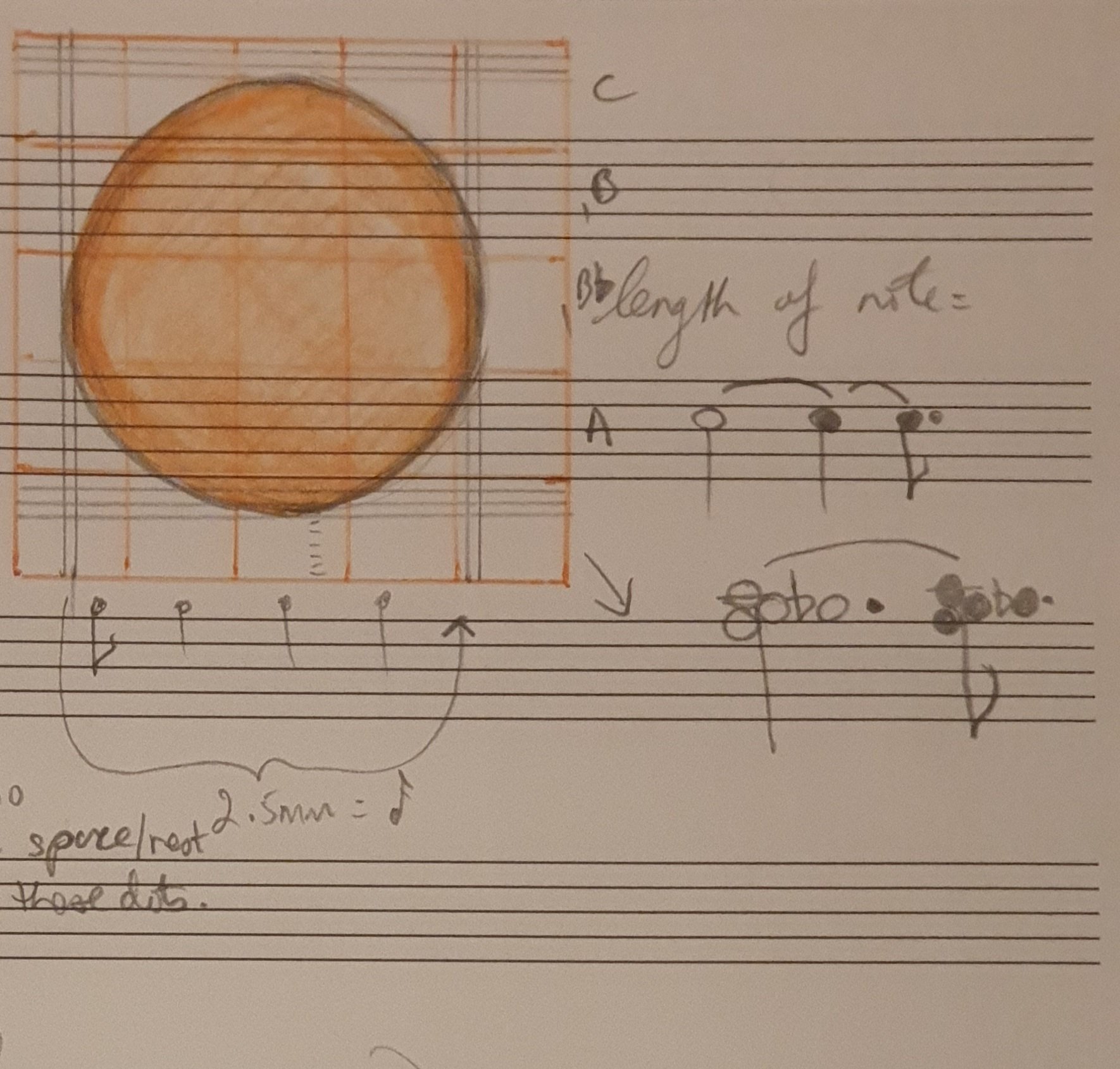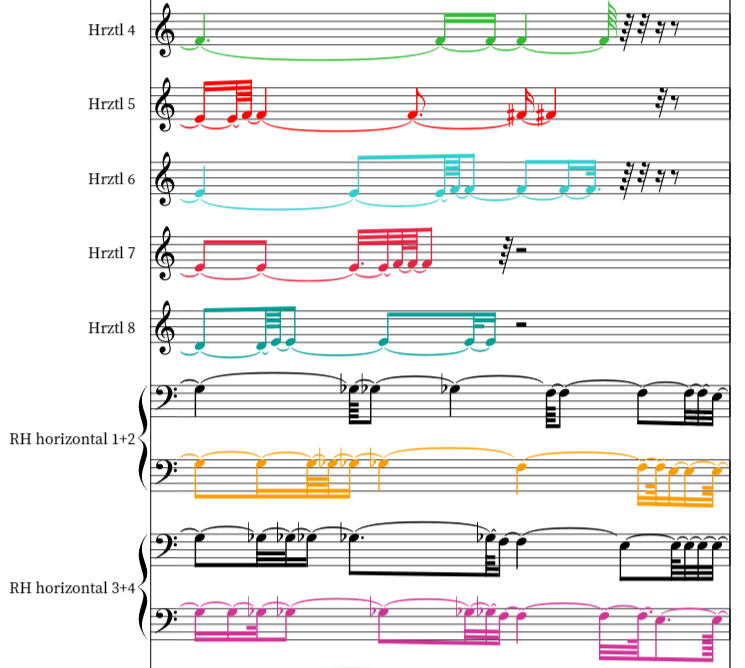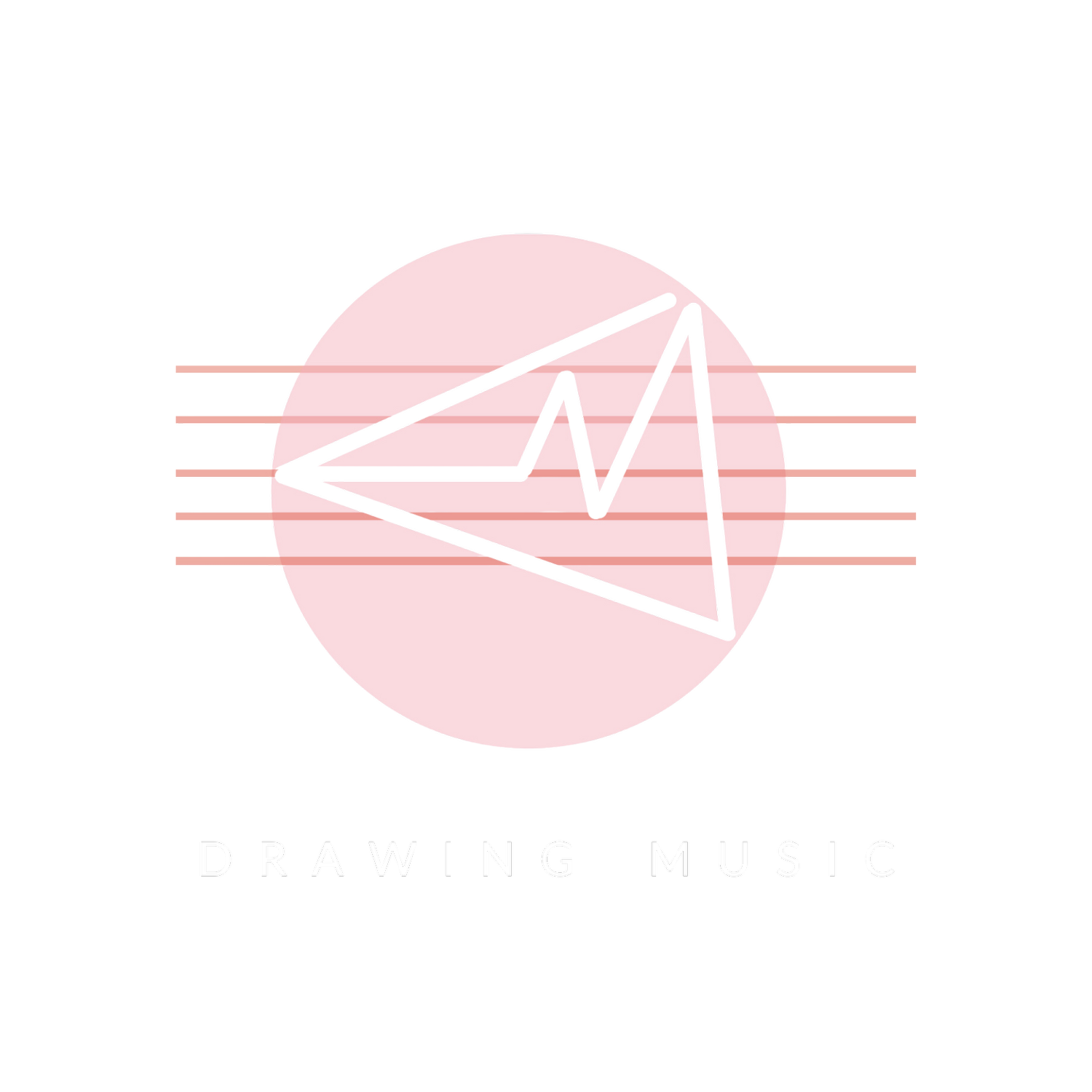
This collaboration involved working with UK-based experimental composer Thomas O’Donnell in which I was invited to interpret his graphic score titled -nOire=
O’Donnell’s work has been performed and premiered in the United Kingdom, Europe, as well as the United States and he begins his Ph.D level research in October 2023. My interpretation of page 2 of -nOire= along with other invited musicians, will be contributing this research.
I am very much a systems-based artist and this is true whether I convert traditional music scores into colour or whether I interpret more experimental pieces, as with O’Donnell’s here, into sound.
With graphic scores, I have to devise my own plan in order to interpret it. It would be too whimsical for me to ‘read’ the score otherwise.
In the images below, I share some of my process where staff lines are represented by the concentric circles. I used this set-up to capture marks within Thomas’s score. Measure or length of the notes were then calculated by how long the lines span across the spaces of the concentric circles.
Using online notation software called Noteflight Music, allowed me to input these notes and also helped fine-tune the scoring, which was too complicated to do manually.
Months of measuring and calculating produced a 20 second sound piece, which you can watch and listen to below:
“Almost a year ago, I reached out to Surrey-based Visual Artist Elizabeth Mikellides, to enquire about a potential collaboration regarding my 2022 composition ‘nOir=’, and they very graciously agreed. Unlike some of my other interpretations, Elizabeth interpreted p.2 only.
However, I must emphasise such a level of skill and detail when paired with a correspondingly fascinating approach toward this work was truly marvellous to engage with. Made possible via a methodology of grid systems through which to read the piece, Elizabeth’s interpretation is patently unique, as it (from a composer's perspective at least) reverse engineers the inherent abstraction of ‘nOir=’, and through incredibly calculated means, reveals an in-depth model of the traditionally notated potential that lies at another dimension of this work; a dimension that I didn’t even know was there.
This interpretation is the result of a nearly year-long collaboration… one that I am delighted to have been a part of. I wholeheartedly encourage all those interested in either or both disciplines to look into Elizabeth’s fascinating work and back catalog. It is remarkable.”
— Thomas O’Donnell, Composer
To read and see more about this important piece of O’Donnell’s work, please visit this link: https://www.instagram.com/p/CtwcDlXgOMf/




